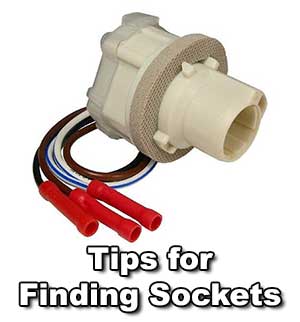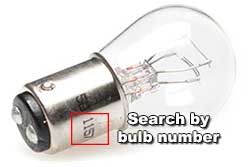
How to find the socket you need:
We get calls on a daily basis that go like this, “Hi, I have a 2005 Chevy Tahoe and I need the socket that connects to the ….”
Unfortunately we can’t utilize this info to guide you to the appropriate socket. The Year/Make/Model approach works when you need brake pads, but not so much with individual electrical connectors. Data like this is published by the manufacturers themselves, and they deal in wiring assemblies, rather than one socket on the assembly. So, even if you look at manufacturer’s service data, you will find that section of the wiring is listed as an entire subassembly that likely costs hundreds of dollars at the dealership.
This issue is compounded because many sockets were used across many years and models, and even by competing manufacturers. Sometimes they changed mid-year, or with different vehicle options. Application specific data just doesn’t apply in most cases.
So how do you find the one you are looking for? Here a few tips that my help.

- If it holds a bulb, try searching for that bulb number. For instance if the socket uses an ‘1157’ bulb, try entering that in the search bar in the upper right. That will bring up all sockets we have listed that take an 1157 bulb.
- If you do have a manufacturer part number, search for that. Numbers on the socket typically aren’t helpful as they are just casting numbers.
- There are some generic connector types used over many years. Those connectors can often be found in their own category. We stock WeatherPack, MetriPack and Deutsch type connectors kits.
- Our sockets are also grouped by use and by number of wires to help you narrow down the potential matches.
- Always visually confirm the socket matches before ordering. Data in the product listings like year ranges tend to be very general. Manufacturers changed sockets mid year and among different models/options.
Still not finding the one you need? Here are some options:
- If the housing is not damaged, you can consider repairing the existing socket. The terminals can all be removed with some fiddling and the proper tool. A sewing “T-pin” can get many of them with some fiddling. If there is a second color on the terminal, start there as that is typically a secondary lock. For instance if the terminal is black with some grey, the grey portion is likely a locking section that needs to be removed before individual pin terminals.
- A salvage yard may be an option. However if you are replacing a terminal because it is old, dried, and crumbling, the ones you find at the salvage yard are likely just as bad.
- If it is just a connection that joins one group of wires to another, you could cut out the entire connector and replace with a new one. Our Deutsch style connector kits would be a good option in this case.
- If the socket you need to replace has a ground wire (a two wire socket with a single filament bulb, or a three wire socket with a two filament bulb), you may be able to add a ground wire by soldering it to the metal housing.
- Try searching enthusiast forums. If the socket is found on a vintage mustang or other collectible car, chances are other people have had the same issue and may have found a solution.
- Find something that is close but not quite? A bit of grinding can sometimes make it work. Drilling out a hole can sometimes make the slightly too large socket fit.